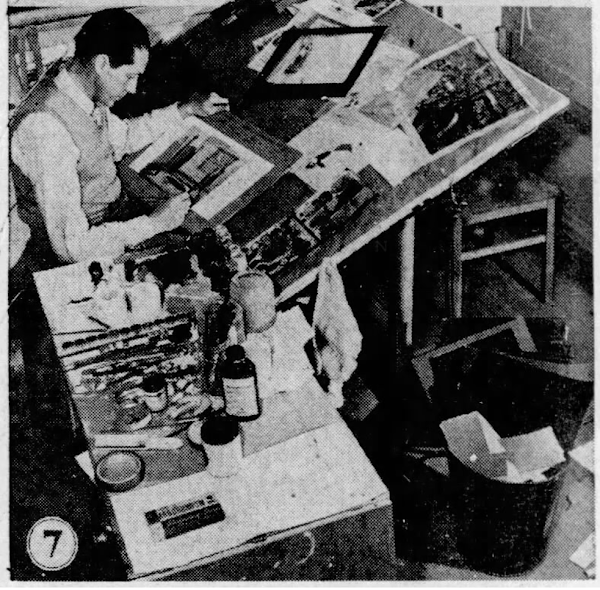One of them is Scrappy’s News Flashes (1937), a not-all-that-strong send-up of movie news reels. Writer Al Rose saves the celebrities for the second half of the cartoon. To make them different than other Columbia shorts, he has turned them into babies.

Here we see Kate Hepburn. Rally we do. The Hepburn-like patter is handled nicely by Elvia Allman; you can hear her do the same impression in the Warners cartoos I Only Have Eyes For You and Little Red Walking Hood.

This is German-born character actor Herman Bing. The voice here is a Danny Webb impersonation but Bing himself worked on one cartoon, playing the ringmaster in Dumbo.

Need I say who these are? The gag is Groucho’s moustache is made from smeared-on jam. Chico plays the piano (I thought the song was Ida but it’s not) and Harpo plays the harp. Columbia sprung for an actual harpist instead of using a piano for a harp like some other studios.

Clark Gable wiggles his big ears.

Martha Raye has a large mouth. That’s the gag. It’s a pretty obvious one and that’s how Rose and the uncredited director decide to end the cartoon.
Musical director Joe De Nat uses what sure sounds like the Fox Movietone News theme at the start and finish. Warners cartoons fans should recognise the music under the Sports portion of the phoney news reel as Carl Stalling put it in a number of cartoons. It’s J.S. Zamecnik’s “In the Stirrups” (heard in Porky and Teabiscuit and Draftee Daffy, among other cartoons).
There’s an obscure radio reference in this sequence. Narrator Scrappy ends the ski portion with “What’s the difference, so long as you’re healthy?” Mary Livingstone used to say that on the early Jack Benny radio shows. She had stopped doing that a few years before this cartoon was made.
Harry Love is the credited animator.
My thanks to Milton Knight for pointing out this cartoon.
















































